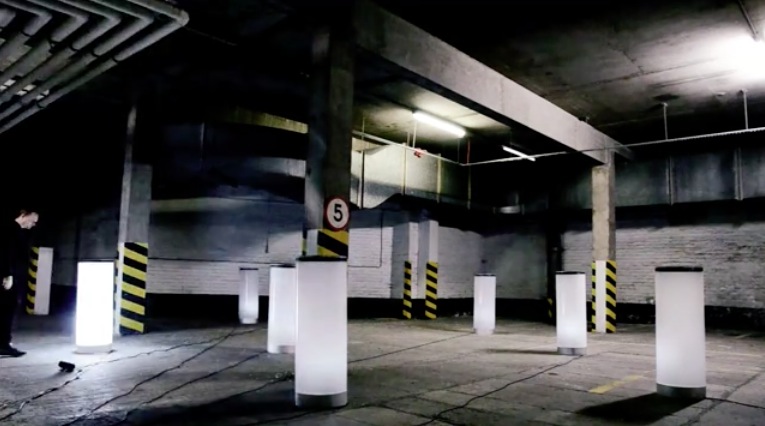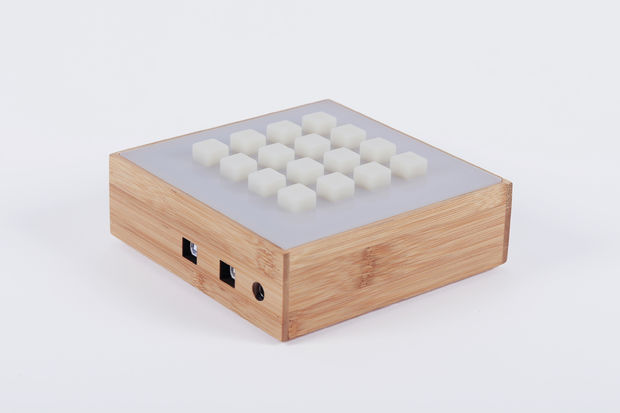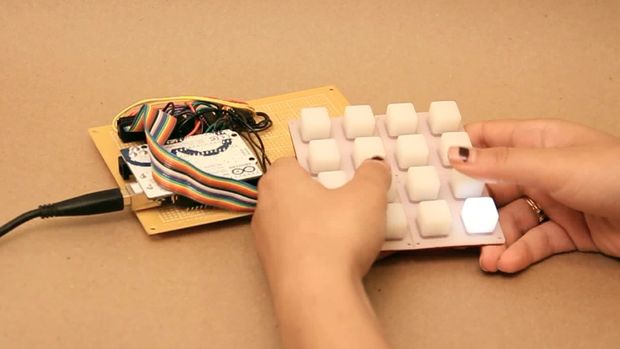Posts with «music» label
3D Printed Bracelet Illuminates On The Beat
EDM Duo Epoch Rises Creates LED Wall as Awesome as Their Music
Hacking the Macetech RGB Shades
 Some of the more in-your-face pieces of wearable technology are macetech’s RGB Shades and LED Matrix Shades. They’re shutter shade sunglasses with a twist: the front surface is crammed with individually controllable LEDs. It’s an attention-grabbing effect, and the person wearing the Shades can see through the LED array just […]
Some of the more in-your-face pieces of wearable technology are macetech’s RGB Shades and LED Matrix Shades. They’re shutter shade sunglasses with a twist: the front surface is crammed with individually controllable LEDs. It’s an attention-grabbing effect, and the person wearing the Shades can see through the LED array just […]DIY russian folk bot playing from EEG

“Turbo-gusli” or “Gusli-samogudy” is a russian folk bot made by Moscow media-artist, musician and engineer of strange-sounding mechanisms – Dmitry Morozov. It’s basically a portable electro-acoustic orchestra inspired by ”Gusli-samogudy”, a self-playing gusli, the oldest Russian multi-string plucked instrument, and very common in old russian fairy tales.
The system works in 3 different modes: when it plays algorithmically from Pure Data patch, when it’s controlled by Emotiv EPOC EEG interface and in MIDI mode (all of them using Pduino library and custom patch in Pure Data).
It runs on 2 Arduino Uno – mainly for interacting with the computer using standard FIRMATA and secondly only to control the stepper motor which is playing random bass notes when it’s triggered by the first Arduino.
A tangible orchestra one can walk through and play with others

Tangible Orchestra is a project by Picarøøn, a collaboration of artists Rebecca Gischel and Sebastian Walter, combining electronic and classical music perceived very individually in a three-dimensional space.
Single units are triggered by people in close proximity and play a unique instrument, with the collection of individual instruments gathering as people congregate in the project space, eventually creating a complete musical work. As electronic music is usually composed and arranged at the mixing desk, the installation creates the illusion of an orchestra playing a musical piece that relies heavily on digitally created sounds and therefore could normally not be perceived this way.
Tangible Orchestra consists of seven individual cylinders that play their unique instrument if people in close proximity are identified by a complex system of sensors. Each column is an independent, interactive sound and computer unit that has the ability to play a separate instrumental track and a sensory system which reacts dynamically to the proximity of its participants.
Essentially, this enables each member of the audience to become a musician and together they constitute a musical ensemble or orchestra. This is achieved because depending on the proximity of each participant to any particular cylinder and the number of participants involved, the range, contribution and volume of the music contained within each cylinder varies proportionately. Therefore, the experience is guaranteed to be different every time; orchestrated by the participants both individually and as part of an ensemble.
The installation uses 112 ultrasonic sensors controlled by Arduino Mega and only if enough people gather and scatter evenly across the project space, the installation evolves to its greatest potential and the complete work of art can be perceived:
Human interaction within Tangible Orchestra is made possible by 16 ultrasonic sensors on the inside of each cylinder, granting a 360 degree field of view. The sensors are run by one integrated microprocessor per cylinder, evaluating and comparing the readings of all sensors making very accurate assessments.
To avoid interference between ultra sonic waves of different cylinders, the microprocessors run consecutively rather than simultaneously. All microprocessors are controlled, assessed and coordinated by one Arduino Mega.
The programming language Processing is used to communicate with Arduino and consequently with the microprocessors in each cylinder. It is programmed to coordinate the microprocessors, so that their sensors cast their rays consecutively as with 112 ultrasonic sensors operating at the same time, there would be a substantial risk of interference and acoustic shadow misreading. It also assesses the data coming from Arduino and, after verification, generates the output. Is a person detected within the bubble of a cylinder, Processing receives the digital information as an input from Arduino and stops muting the respective instrument which then joins into the melody. Processing also reads the values of each instrumental track to calculate the digital signals for the LEDs and controls the LED stripes inside of the cylinder.
Each instrument is played by a separate speaker which is located in the base of each cylinder. Multiple sound outputs were realised by using several external sound cards together with the minim library by Damien Di Fede. When an instrument plays, the beats of the audible track are analysed and consequently values are calculated to create an equalizer-like light beam. The outcome is transferred via Arduino to a transformer, which converts the 5V Arduino signal into an 230V output operating 192 LEDs per cylinder. Another transformer converts 5V Arduino signals into 12V output powering LED stripes inside of each cylinder as soon as they are activated.
The first exhibition of the Tangible Orchestra was at Royal Mile, Edinburgh this May 2014. Check their website for next events.
Sugarcube, a grid based music controller with accelerometer

Once again Amanda Ghassaei sent a cool project she’s been working on lately as an extension of the work she’s been doing on the monome project. Sugarcube is an open source, grid-based, standalone MIDI instrument self-contained and relatively cheap to make. It communicates via a MIDI output with other electronic MIDI instruments and software environments like Ableton and MaxMSP.
An Arduino Uno generates all of its MIDI data and drives LEDS, buttons, a 2 axis gyroscope, a 3 axis accelerometer, two potentiometers, and the whole device is powered by a lithium-polymer battery making it pretty portable.
She published detailed documentation on Instructables to make one yourself and shared a bunch of videos to discover its main features:
Basically this project is:
A portable, Arduino-powered, grid-based MIDI controller that boots up into a variety of apps to do lots of things with sound. The controller has 16 backlit buttons, used as both inputs and outputs to give the controller some visual feedback. 2 potentiometers give analog control, depending on the app the pots are assigned to tempo, MIDI velocity, pitch, and scrolling (making the avaible grid space larger than 4×4). An x/y accelerometer and an x/y gyroscope add some playful, gestural control to the device; most of the apps implement a “shake to erase” control and several respond to tilt in various ways.
It boots up into 7 different apps, though it has the potential to boot up into 16 total. This device is primarily a MIDI controller, but I’ve also written an app that allows you to pull the button and analog data into MaxMSP and to control audio.
…
With this project, I was interested in making a device that was a little more self-contained and relatively cheap to make (lots of buttons = lots of $). In keeping more with the concept of the tenori-on, this controller does all its app processing itself, it does not rely on a computer to process button presses/analog controls into MIDI. This means you can plug it directly into a synth or any device that understands MIDI and you’re good to go, no computer required. It runs off a beefy LiPo battery that keeps it running for days on a charge, so it’s fairly portable as well. In keeping with the monome side of things, it’s totally open source and can be adapted to your particular audio setup/needs. All the Arduino code is up on github, along with a MaxMSP patch that decodes data from the controller into something usable in Max.

The Centurion Project: LED Helmet
 7 meters of RGB LEDs crammed onto a centurion’s helmet? It makes perfect sense once you see it in action. When you’re a creative developer with a name like Roman, you’re bound to find yourself recreating things from antiquity. Roman Cory found his inevitable foray into ancient Roman culture resulted […]
7 meters of RGB LEDs crammed onto a centurion’s helmet? It makes perfect sense once you see it in action. When you’re a creative developer with a name like Roman, you’re bound to find yourself recreating things from antiquity. Roman Cory found his inevitable foray into ancient Roman culture resulted […]








